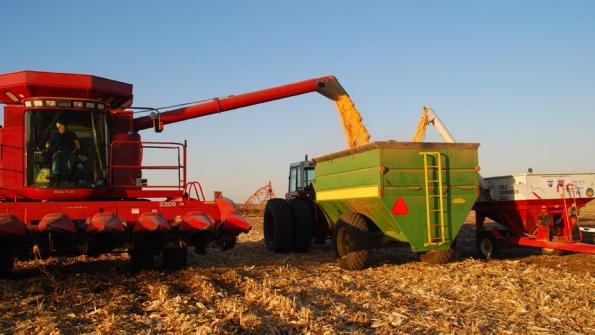November 27, 2015

Many factors in the agricultural economy are leading farmers to consider leasing new equipment purchases instead of an outright purchase. It’s important to consider both the pros and cons to this decision and consider what effect lease vs. purchase decisions have on the tax return.
Pros
Leasing equipment can make a positive change to your balance sheet.
Reducing debt will improve the debt to asset ratio for a farm that has equity in asset. We will also see improvement in the current ratio and working capital of the operation by removing that current debt from the balance sheet. Some lending institutions will include the upcoming lease payment as a current debt so this pro may depend on the individual.
Leasing will keep you from having an asset that depreciates.
Most farm equipment depreciates rapidly. The last few years have certainly been an exception to that generalization but we are seeing the trend of prices for used equipment dropping again. One argument that is often made in the case for a lease is that you don’t see that depreciation because you don’t own the asset. On the other hand, by not owning you will never build equity in the asset. The importance of this depends on the individual operation’s goals.
A young or beginning farmer may look at leasing equipment as a means to freeing up their leverage ratio to allow their equity to be used to purchase land someday.
A small farmer may not have enough acres to spread out the ownership cost of a combine and leasing could allow him to use a good machine without such a large outlay (although the minimum hour requirements of many leases take this advantage out).
An operation that routinely trades equipment every year or two wouldn't have built equity in the asset anyway.
Cons
Taxes
Most financial institutions that furnish equipment with lease agreements put taxes at the top of their list of reasons you should lease equipment, but as a tax preparer, I list taxes as the top con.
Tax law certainly allows that rental or leasing of farm assets is an “ordinary and necessary business expense.” It also clearly defines what is NOT considered a lease but rather a Conditional Sales Contract in IRS Publication 535.
In the leases I see there are many factors that trip the IRS rules, but the most common is certainly a lease that has a stated or imputed interest value or does not have a true fair-market value buyout schedule in the end. In simpler terms, a true lease will not have an equal payment as the buyout, there won’t be a stated interest rate, and you won’t gain any equity in the asset.
Deferred Tax Gain
Whenever a producer moves from owning an asset to leasing one, we have to deal with the sale of the old asset. Even if the dealer allows a “trade-in” of the value of the owned tractor on the lease of a new one (which pokes further holes in the IRS view of a true lease), it is not a qualified like-kind exchange because you don’t own the new tractor. This means that you will need to recognize the gain on the sale of the old tractor when you dispose of it. If we had a tractor with a FMV of $100,000 and $0 basis assuming we’ve used all the depreciation (likely with the enhanced depreciation that we’ve enjoyed the past few years), you have a $100,000 gain and could easily recognize a $20,000 or higher tax bill as a result.
No Equity Builds
Regardless of IRS’s definition of a true lease, there are management concerns with never building equity. We looked at a few types of operations that may benefit from having a lease but there is a long term downside to never building equity in the major pieces of equipment. Operations who can get ahead of the debt load and build equity in equipment will have that net worth and eventually improved cash flow for not having the make those debt payments.
Conclusion
When a producer asks me whether he should lease or purchase an asset, I often step back and evaluate the question based on two purchase options, throwing out the tax benefit of a “lease” until I find a lease agreement that meets IRS guidelines.
Examining one farmer's options
As an example, I had a producer call with just this question. He had been trading tractors every two years for many years and had recently switched to every year. The salesman was back with what they could do to trade this time.
The quote was $85 per hour for two tractors that had a combined 1,200 hours or $102,000.
The lease option was a two-year commitment. It was $30,000 per year, per tractor for 1,200 hours or a total of $60,000 per year.
The producer called me with the tax concern of selling his current tractors and the fact that he wouldn’t be building equity with the lease option. On the other hand he was thinking he would be locking in the equity he’d built in his current machines. He had already dismissed the option to purchase and we discussed the option of not trading at all. His current loan payment was about $50,000 making this option the best for cash flow and reducing his expenses. Obviously, at some point, equipment needs to be replaced, but now is a great time to reconsider “habits” built during times of prosperity.
While understanding the tax implications of any decision is important, I encourage the producers I work with to look at this decision as to which one makes the most management sense (lower payments, better interest rate, etc.) for their operation.
You May Also Like




